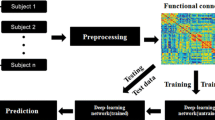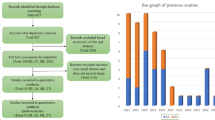Abstract
In recent years, the use of medical imaging in the analysis of human body structure and diagnosis of diseases has greatly increased. Schizophrenia is a serious psychiatric illness which needs early and accurate diagnosis. Functional magnetic resonance imaging (fMRI) with appropriate spatial resolution is a powerful technique for visualizing human brain activity. One of the major challenges in classifying these images is the high-dimensional fMRI images along with the poor quality of these data. In this study, a general framework for classifying images into two groups of healthy and schizophrenic patients is presented. In this method, after preprocessing fMRI images, functional connectivity analysis is used to extract the features. After extracting functional mappings, we use three-dimensional convolutional neural network and long short-term memory recurrent network to extract spatial and temporal information to classify activity maps. Our results show that the use of these features can lead to a strong classification on the COBRE dataset with an accuracy of 92.32%, which is very promising.





Similar content being viewed by others
References
Demirci, O., et al.: A review of challenges in the use of fMRI for disease classification/ characterization and a projection pursuit application from multi-site fMRI schizophrenia study. Brain Imaging Behav. J. 2, 147–226 (2008)
Tang, Y., Wang, L., Cao, F., Tan, L.: Identify schizophrenia using resting-state functional connectivity: an exploratory research and analysis. BioMed. Eng. OnLine J. 11, 1–16 (2012)
Anderson, A., Cohen, M.S.: Decreased small-world functional network connectivity and clustering across resting state networks in schizophrenia: an fMRI classification tutorial. Front. Hum. Neurosci. J. 7, 520 (2013)
Cetin, M.S., et al.: Multimodal classification of schizophrenia patients with MEG and fMRI data using static and dynamic connectivity measures. Front. Neurosci. J. 10, 1–16 (2016)
Juneja, A., Rana, B., Agrawal, R.K.: A combination of singular value decomposition and multivariate feature selection method for diagnosis of schizophrenia using fMRI. Biomed. Signal Process. Control J. 27, 122–133 (2016)
Guyon, I., Weston, J., Barnhill, S., Vapnik, V.: Gene selection for cancer classification using support vector machines. Mach. Learn. J. 46, 389–422 (2002)
Castro, E., Martinez-Ramon, M., Pearlson, G., Sui, J., Calhoun, V.D.: Characterization of groups using composite kernels and multi-source fMRI analysis data: application to schizophrenia. Neuroimage J. 58, 526–536 (2011)
Pouyan, A.A., Shahamat, H.: A texture-based method for classification of schizophrenia using fMRI data. Biocybern. Biomed. Eng. J. 35, 45–53 (2015)
Qureshi, M.N.I., Ryu, S., Song, J., Lee, K.H., Lee, B.: Evaluation of functional decline in Alzheimer’s dementia using 3D deep learning and group ICA for rs-fMRI measurements. Front. Aging Neurosci. 11, 8 (2019)
Kim, J., Calhoun, V.D., Shim, E., Lee, J.H.: Deep neural network with weight sparsity control and pre-training extracts hierarchical features and enhances classification performance: Evidence from whole-brain resting-state functional connectivity patterns of schizophrenia. Neuroimage J. 124, 127–146 (2016)
Zeng, L., et al.: Multi-site diagnostic classification of schizophrenia using discriminant deep learning with functional connectivity MRI. EBioMed. J. 30, 74–85 (2018)
Han, S., Huang, W., Zhang, Y., Zhao, J., Chen, H.: Recognition of early-onset schizophrenia using deep learning method. Appl. Inform. J. 4, 0–5 (2017)
Chyzhyk, D., Savio, A., Grana, M.: Computer aided diagnosis of schizophrenia on resting state fMRI data by ensembles of ELM. Neural Netw. J. 68, 23–33 (2015)
Sladky, R., Friston, K.J., Tröstl, J., Cunnington, R., Moser, E., Windischberger, C.: NeuroImage slice-timing effects and their correction in functional MRI. Neuroimage J. 58, 588–594 (2011)
Grootoonk, S., et al.: Characterization and correction of interpolation effects in the realignment of fMRI time series. Neuroimage 57, 49–57 (2000)
Lancaster, J.L., et al.: Bias between MNI and Talairach coordinates analyzed using the ICBM-152 brain template. HumanBrain Mapp. J. 28, 1194–1205 (2007)
Mikl, M., et al.: Effects of spatial smoothing on fMRI group inferences. Magn. Reson. Imaging J. 26, 490–503 (2008)
Chen, L., Gunter, S., Mertins, A.: multiple feature extraction for early Parkinson risk assessment based on transcranial sonography image. In: 2010 IEEE International Conference on Image Processing, vol. 1, pp. 2277–2280 (2010)
Chao-Gan, Y., Yu-Feng, Z.: DPARSF: a MATLAB toolbox for pipeline data analysis of resting-state fMRI. Front. Syst. Neurosci. J. 4, 13 (2010)
Wang, J., et al.: Amplitude of low-frequency fluctuation ALFF and fractional ALFF in migraine patients A resting state functional MRI study. Clin. Radiol. J. 71, 558–564 (2016)
Cha J, Hwang J-M, Jo HJ, et al.: Assessment of functional characteristics of amnestic mild cognitive impairment and Alzheimer’s disease using various methods of resting-state fMRI analysis. Biomed Res Int ,2;1–12 (2015).
Zou, Q., Zhu, C., Yang, Y., Zuo, X., Long, X.: An improved approach to detection of amplitude of low-frequency fluctuation ALFF for resting-state fMRI Fractional ALFF. J. Neurosci. Methods J. 172, 137–141 (2008)
Zuo, X.-N., et al.: The oscillating brain complex and reliable. Neuroimage J. 49, 1432–1445 (2010) )
Kendall, M., Gibbons, J.D.: Rank Correlation Methods, pp. 287–302. E. Arnold, London (1990
Zang, Y., Jiang, T., Lu, Y., He, Y., Tian, L.: Regional homogeneity approach to fMRI data analysis. Neuroimage J. 22, 394–400 (2004)
Stark, D.E., et al.: Regional variation in interhemispheric coordination of intrinsic hemodynamic fluctuations. Neurosci. J. 28, 13754–13764 (2008)
Fan, H., Yang, X., Zhang, J., Chen, Y., Li, T., Ma, X.: Analysis of voxel mirrored homotopic connectivity in medication free, current major depressive disorder. J. Affect. Disord. 240, 171–176 (2018)
Xingjian, S., Zhourong, C., Hao, W., Dit-Yan, Y., Wong, W., Woo, W.: Convolutional LSTM network: a machine learning approach for precipitation nowcasting Xingjian. J. Affect. Disord. 1, 802–810 (2015)
Author information
Authors and Affiliations
Corresponding author
Additional information
Publisher's Note
Springer Nature remains neutral with regard to jurisdictional claims in published maps and institutional affiliations.
Rights and permissions
About this article
Cite this article
Ghanbari, M., Pilevar, A.H. & Bathaeian, N. Diagnosis of schizophrenia using brain resting-state fMRI with activity maps based on deep learning. SIViP 17, 267–275 (2023). https://doi.org/10.1007/s11760-022-02229-9
Received:
Revised:
Accepted:
Published:
Issue Date:
DOI: https://doi.org/10.1007/s11760-022-02229-9




